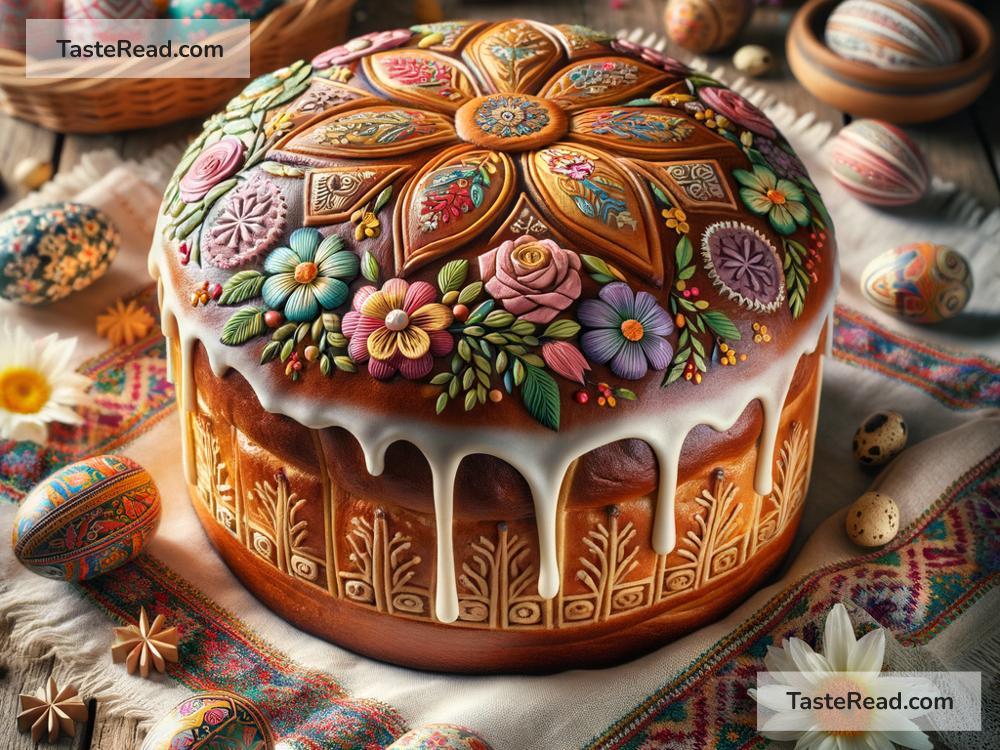Celebrating Intricate Ukrainian Paska Bread Traditions
Ukraine is a country with a rich cultural heritage, and one of its most cherished traditions revolves around food—especially during Easter. One standout Easter tradition is the making of Paska bread, a beautifully decorated, sweet bread that symbolizes faith, renewal, and community. This blog will explore the significance of Paska bread, its history, and the love and care that goes into its preparation.
What is Paska Bread?
Paska bread is a traditional Easter bread in Ukraine, made with simple ingredients like flour, eggs, sugar, butter, milk, and yeast. However, what sets Paska apart from other breads is its symbolism and its intricate decorations. Rather than being just food, Paska is considered a spiritual offering, a tradition steeped in meaning and devotion.
The bread is often baked in tall, round tins and topped with beautiful designs made from dough. These decorations range from crosses and braids to flowers and even sun rays, with each design representing something related to Easter. The cross, for instance, symbolizes the resurrection of Jesus, while braids often signify the unity of the church and community.
A History Rooted in Faith
The origins of Paska bread trace back centuries. In Ukrainian Orthodox and Catholic traditions, Easter is the most important holiday of the year, celebrating Jesus Christ’s resurrection. Families would prepare extensive feasts to mark the occasion, with Paska taking center stage.
Traditionally, the bread was baked on Holy Thursday or Good Friday. This was no ordinary bread—it was thought to bring blessings to the household. Because of its spiritual importance, people treated the preparation of Paska with great care and respect. Some even believed that negative emotions such as anger or impatience while baking could affect the bread’s quality.
Once the Paska was baked, it was brought to the church on Easter morning to be blessed by the priest along with other foods like sausages, cheese, and eggs. This blessing ritual added a sacred touch to the meal, reminding families of the deeper purpose of Easter: renewal, gratitude, and joy.
The Art of Decoration
One of the most fascinating aspects of Paska bread is its decoration. Making these breads is not just about cooking—it’s about creativity and storytelling. Ukrainians take pride in how their Paska looks, combining artistry and symbolism to create something truly unique.
The top of the bread often features intricate shapes and patterns made from dough—a true labor of love. Some families pass down their favorite designs through generations, creating a strong connection between past and present.
Common decorations include:
- Crosses: Represent faith and the resurrection of Jesus.
- Ropes or Braids: Symbolize unity and eternity.
- Flowers: Stand for life, renewal, and the beauty of nature.
- Sun Rays: Represent light and hope brought by Christ’s resurrection.
These designs are carefully arranged on top of the bread, and sometimes the Paska is baked so perfectly that the decorations have a golden glow. It’s common for children to get involved in this part of the process, learning the techniques from their elders.
A Family Tradition
Paska bread isn’t just about faith—it’s also about family. The preparation of bread often involves multiple generations working together in the kitchen. Grandmothers, mothers, and children gather to mix, knead, shape, and bake the dough. It’s a time when stories are told, laughter is shared, and traditions are passed down.
Many families follow specific rituals while making the bread. Some sing hymns, pray, or maintain silence to show reverence. These practices remind everyone of the bread’s spiritual meaning and the importance of staying mindful during its creation.
The process can take hours, but the reward is priceless: a beautiful loaf of Paska that not only tastes delicious but also conveys love, care, and tradition.
Celebrating Paska Today
Although modern life has brought changes to many traditions, baking Paska remains an essential part of Ukrainian Easter celebrations. In cities or rural villages, you’ll find families proudly carrying their Paska bread to church for blessings before enjoying it at their holiday meals.
Even outside Ukraine, communities around the world celebrate this tradition. Ukrainian immigrants have brought the art of Paska with them, introducing its beauty to new cultures. Today, you can find Paska bread not only during Easter but also at cultural festivals, bakeries, and special family gatherings.
A Delicious Reminder of Tradition
For Ukrainians, Paska bread is more than food; it’s a connection to their history, religion, and loved ones. Each loaf tells a story—not just about Easter but also about the values of patience, creativity, and community. In every bite, there’s a sense of continuity, a reminder of the traditions that make life meaningful.
If you ever get a chance to try or bake Paska bread, know that you’re engaging in a centuries-old tradition filled with heart, artistry, and faith. It’s a delicious way to honor the past while sharing joy with loved ones.
So this Easter, consider learning about Paska and maybe even baking your own. Celebrate not just the beauty of the bread, but also the love, culture, and meaning behind it—a true feast for the soul.
By embracing and sharing traditions like Paska bread, we keep alive the rich cultural heritage of Ukraine and ensure that future generations can taste—and treasure—a slice of history.


